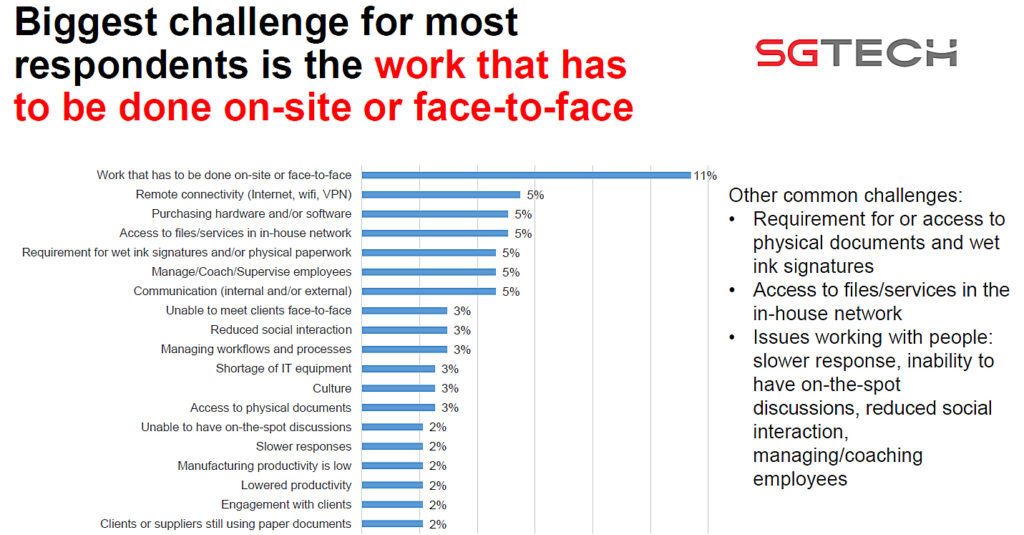A survey by SGTech revealed that SMEs and microenterprises underwent forced, and rapid, transition to a more digital way of work in the days and weeks following enforcement of the Singapore circuit breaker measures by the government. This includes use of technologies for remote work, meetings and collaboration.
Respondents to the survey admit that prior to COVID-19, 37% of SMEs and microenterprises did not allow their employees to work from home, while 43% had previously only allowed their employees to work from home on exception.
The respondents admit to a steep learning curve, following the Circuit Breaker announcement April 3 and as they only had four days to prepare their employees. More companies found the transition easier as the weeks passed, with 49% saying they found the transition easy in the third week, compared to only 26% in the first week.
With WFH now in place, 79% of companies say they have become more knowledgeable about technology tools.
In terms of technology adoption, 53% of respondents prioritised purchases around remote collaboration software and meeting tools, followed by 50% for laptops and tablet computers and 36% for both Virtual Private Network licences and mobile internet connections.

“Embracing new software in an existing business is a frightening experience for many SME business owners and employees as they are used to a certain way of doing things. The use of video conferencing technology is a positive sign for SMEs. This experience has forced them to the edge and hopefully, they will now be more receptive to adopting other digital solutions,” said Ivan Chang, co-opted Councillor for SGTech.
Challenges can be remote-ized – challenges ahead
Not all work can be done remotely, however. Eleven per cent of respondents say the biggest challenge remain that some of their work has to be performed on-site or require face-to face meetings.
At a company level, 17% said they could only perform 20% cent of their work or less remotely even if all tools and resources are available. In comparison, only 22% said that they are able to perform more than 80% of the work remotely.
Other challenges cited include the requirement for physical documents and wet ink signatures; getting access to files/services from the in-house network and issues working with people: slower responses, inability to have on-the-spot discussions, reduced social interaction and managing/coaching employees.
Chang acknowledged that services business, as well as some manufacturing, are taking a hit from the circuit breaker restrictions.

“The challenges these companies face are real and there is an aspect of connection in our interactions with our customers and employees. SMEs would need to think outside the box and see how they can do more with less. The move to work from home as a result of the pandemic can have a lasting impact on how businesses operate in the future. Those that figure out how to replicate this connection, using technology, will reap benefits,” added Chang.
Since the onset of COVID-19, 88% reported that they have experienced a slowdown and saw revenues drop. Only four per cent saw revenue increase.
In response, up to 90% have placed priorities on tightening operational costs and keeping the business afloat.
Forty-two per cent are considering diversifying or pivoting their business as their highest priority, while 35 per cent reported that they plan to seek help or business advice as their top concern.





